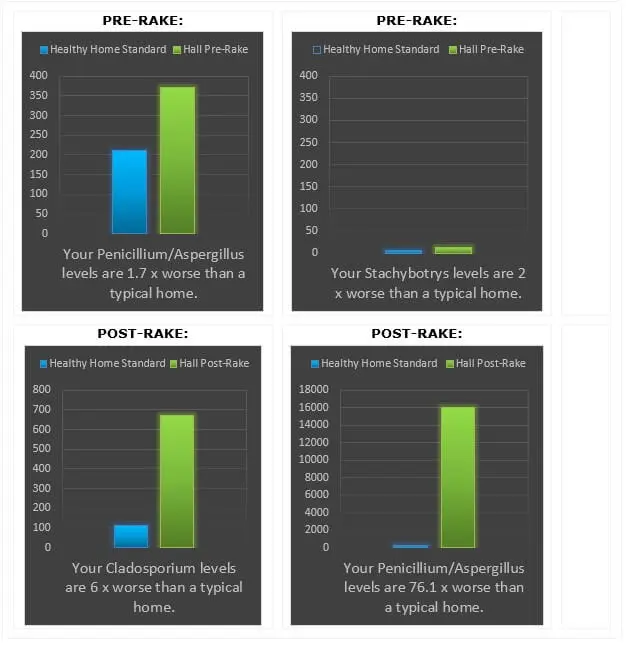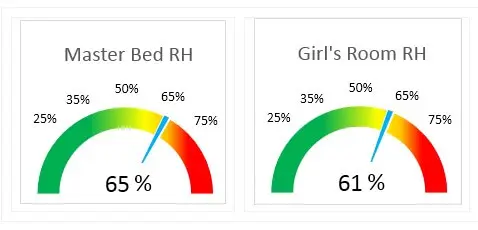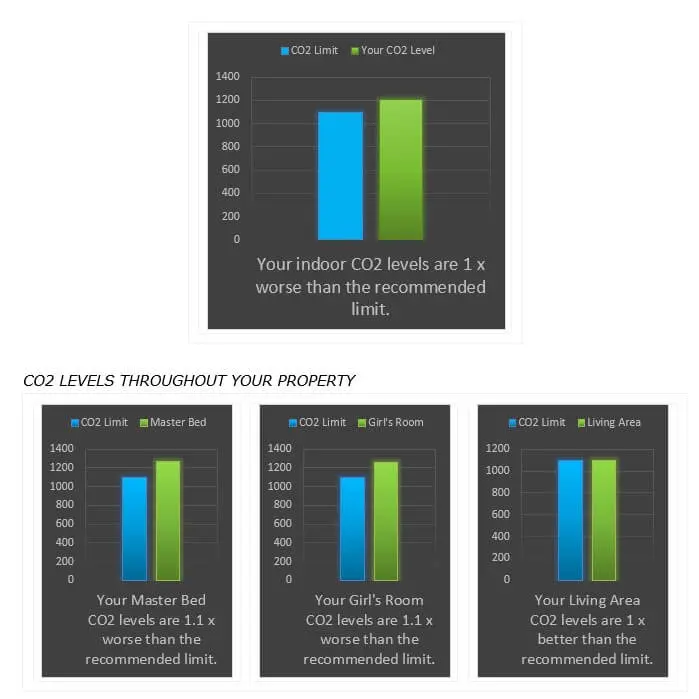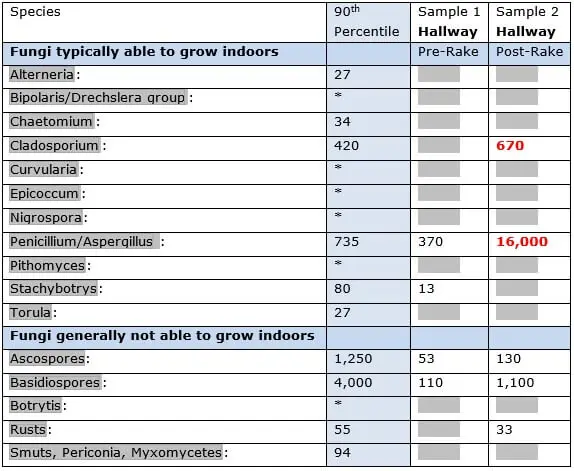Mold Testing Report in Lakewood
Project Type > Mold Testing in an Apartment
Project Summary
- Client called Environix due to significant amounts of mold growth being found on walls and contents. Client requested an inspection to determine what could be causing the issues.
- This residence is a rental apartment.
Cause of Mold
- Excessive relative humidity levels inside the home.
- Water spraying against the side of the home due to a misplaced sprinkler head.
Laboratory Results
The most likely contributor of the elevated mold spores is:
- Elevated humidity.
- Recent water intrusion.
Recommendations:
- Due to the extremely high level of mold spores in your home, immediate action is necessary.
- Remove carpeting throughout the unit. Consider replacing the carpeting with hard surface flooring such as laminate. This will greatly increase the ability to clean the area and remove settled mold spores. Removal of carpeting should be performed with HEPA air scrubbers in place. Please contact us for pricing.
- Consider having the carpets cleaned using a hot water extraction method. Ensure the carpets are able to dry very quickly. Environix can provide air movers or dehumidifiers to assist in fast carpet drying. Please contact your inspector for pricing.
- Due to the elevated levels of mold spores, the operation of a commercial HEPA air scrubber is recommended. This will rapidly lower the indoor mold spore levels. Please contact your inspector for pricing.
JOBSITE PHOTOS
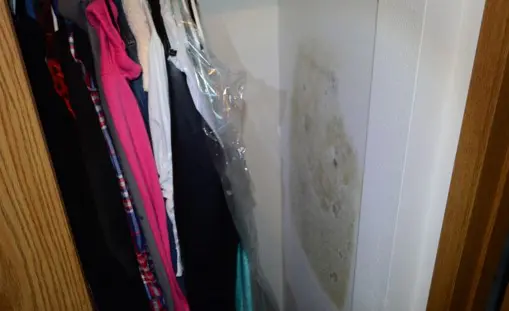
Mold Growth on Interior Closet Wall – No Moisture Noted
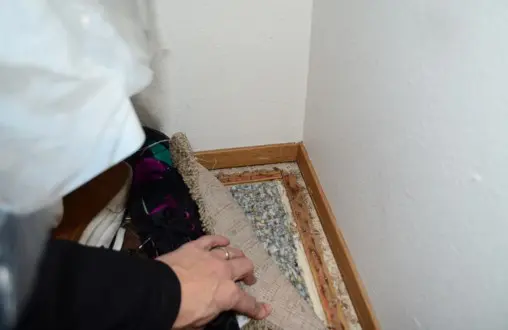
No Significant Water Damage Noted to Closet Tac Strip
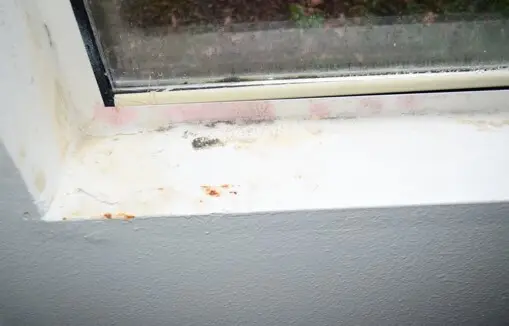
Wet Window Sills From Excessive Window Condensation
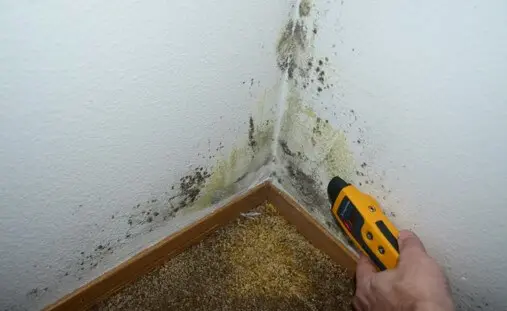
Elevated Moisture Noted In Corner Of Window Bay
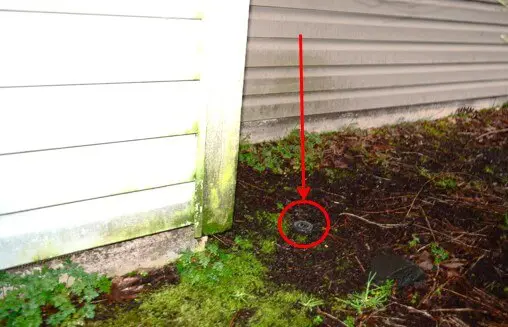
Water Intrusion Appears to Be From The Exterior Sprinkler
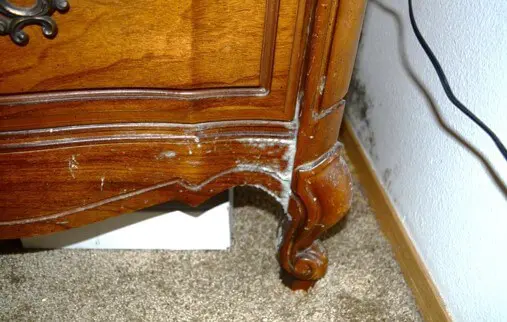
Mold Growth Noted on Furniture
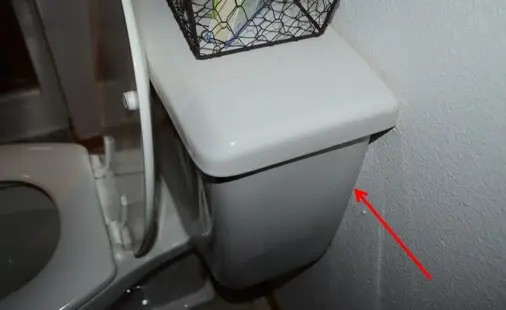
Condensation on Toilet Tank Leads To Mold On Wall
RELATIVE HUMIDITY & CO2 READINGS:
CO2 READINGS:
LOCATION: Master Bathroom
- Visible mold growth observed on the wall behind the toilet. The toilet is too close to the wall to easily clean behind it.
LOCATION: Master Bedroom
- Heavy condensation-based mold growth was observed throughout the room.
- Mold on contents due to humidity. Mold growth on contents is a sign of extreme levels of indoor humidity and very likely indicates highly elevated levels of mold spores. This could cause adverse health reactions in sensitive individuals.
- Mold was noted on exterior walls. Much of this mold appears to be due to poor air circulation due to contents being against the wall and excessively high relative humidity levels.
- Heavy mold observed on window and window frames. Window sills were found to be saturated and are leaking.
- Evidence of water damage was noted in the bottom 12” of the exterior wall below the window. This appears to be due to a poorly directed sprinkler head located directly outside the window. Water is spraying against the side of the building and has led to water intrusion.
- Mold growth observed on exterior wall in closet. This is often due to limited air flow and insufficient heat.
Recommendations:
- Remove and replace the window sills in this room due to mold and water damage.
- Remove and replace the bottom 12” of wall below the window due to water damage.
- Keep contents and furniture a minimum of 2-3 inches away from exterior walls to help prevent mold growth on these surfaces.
LOCATION: Girl’s Bedroom
- Light condensation-based mold observed on windows and window frames.
- Elevated moisture was detected in the window sills.
- Evidence of water damage was present in the window sills.
LOCATION: Living Room / Dining Room
- Light condensation-based mold observed on windows and window frames.
- Elevated moisture was detected in the window sills.
- Evidence of water damage was present in the window sills.
Laboratory Results


